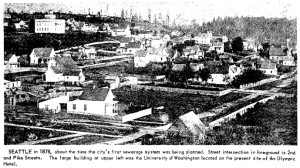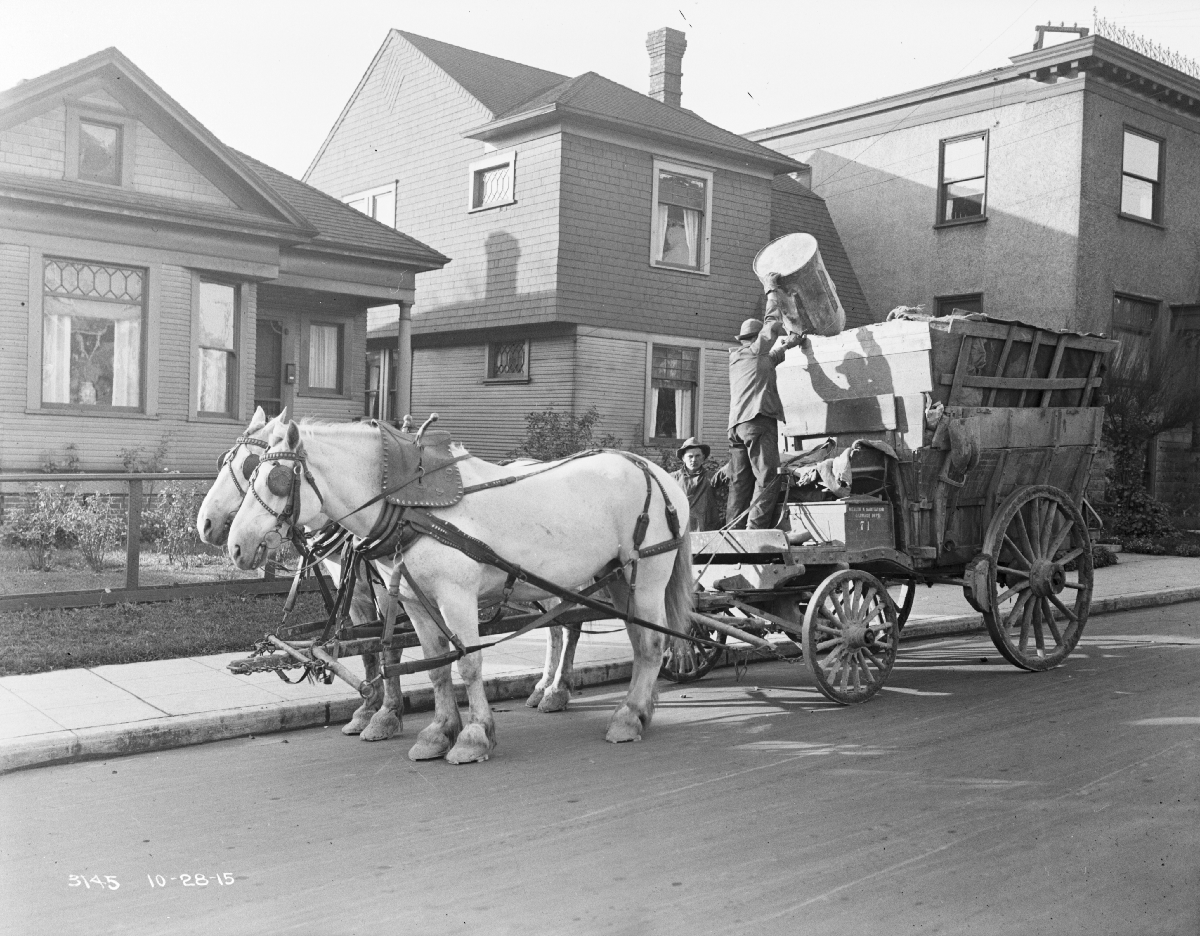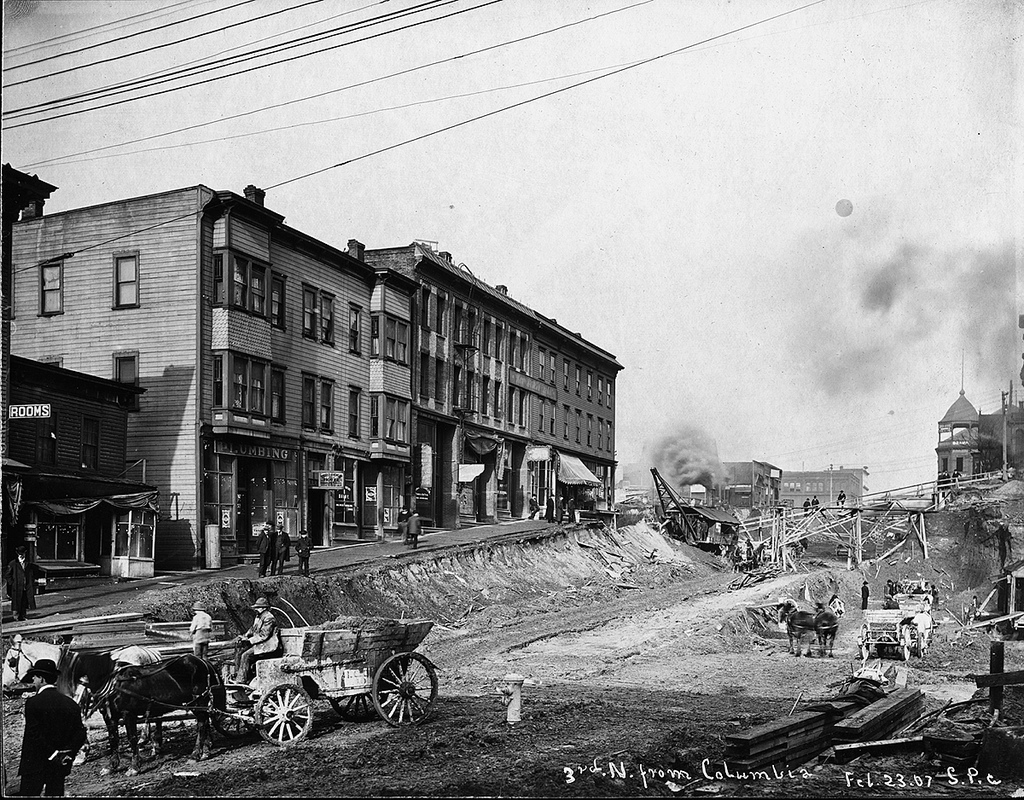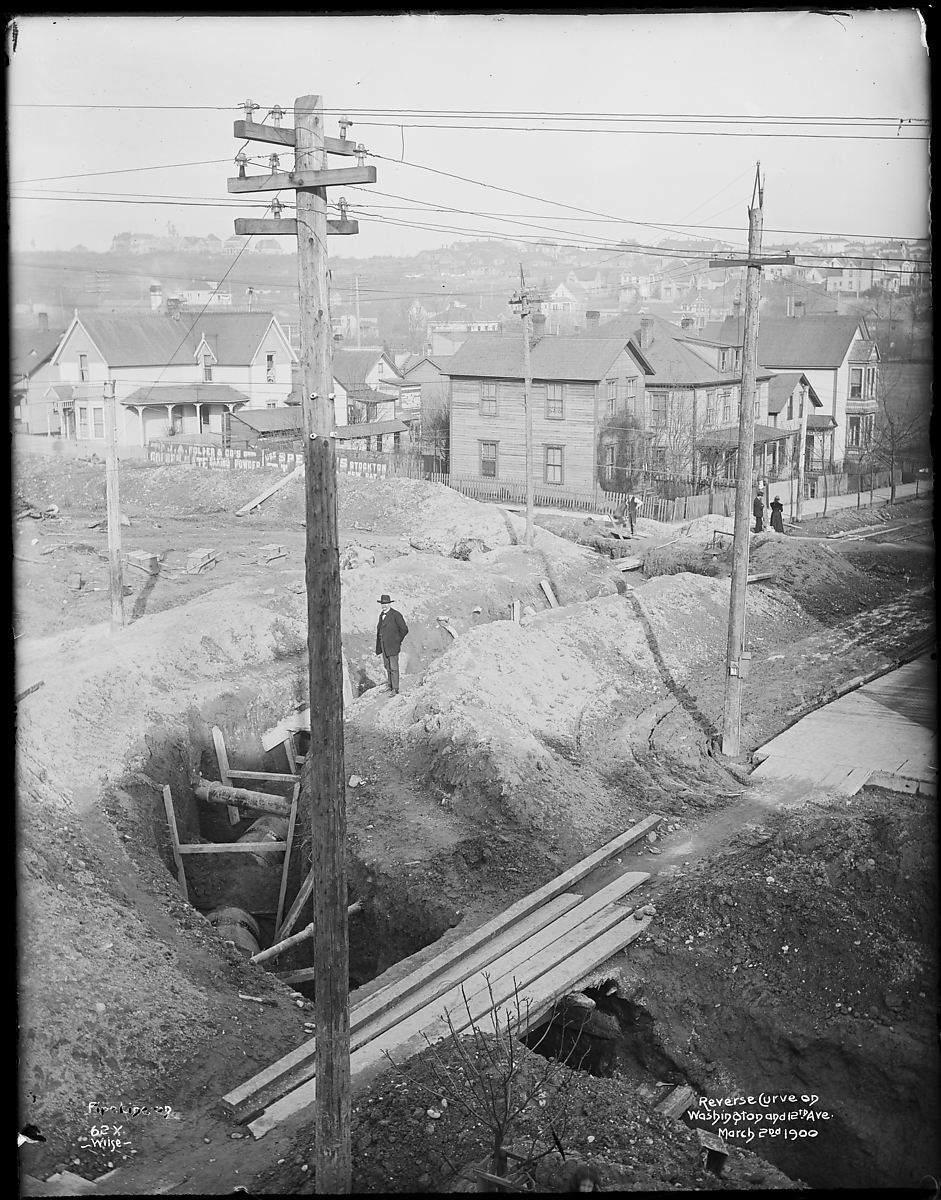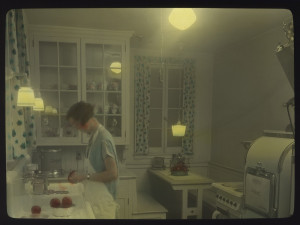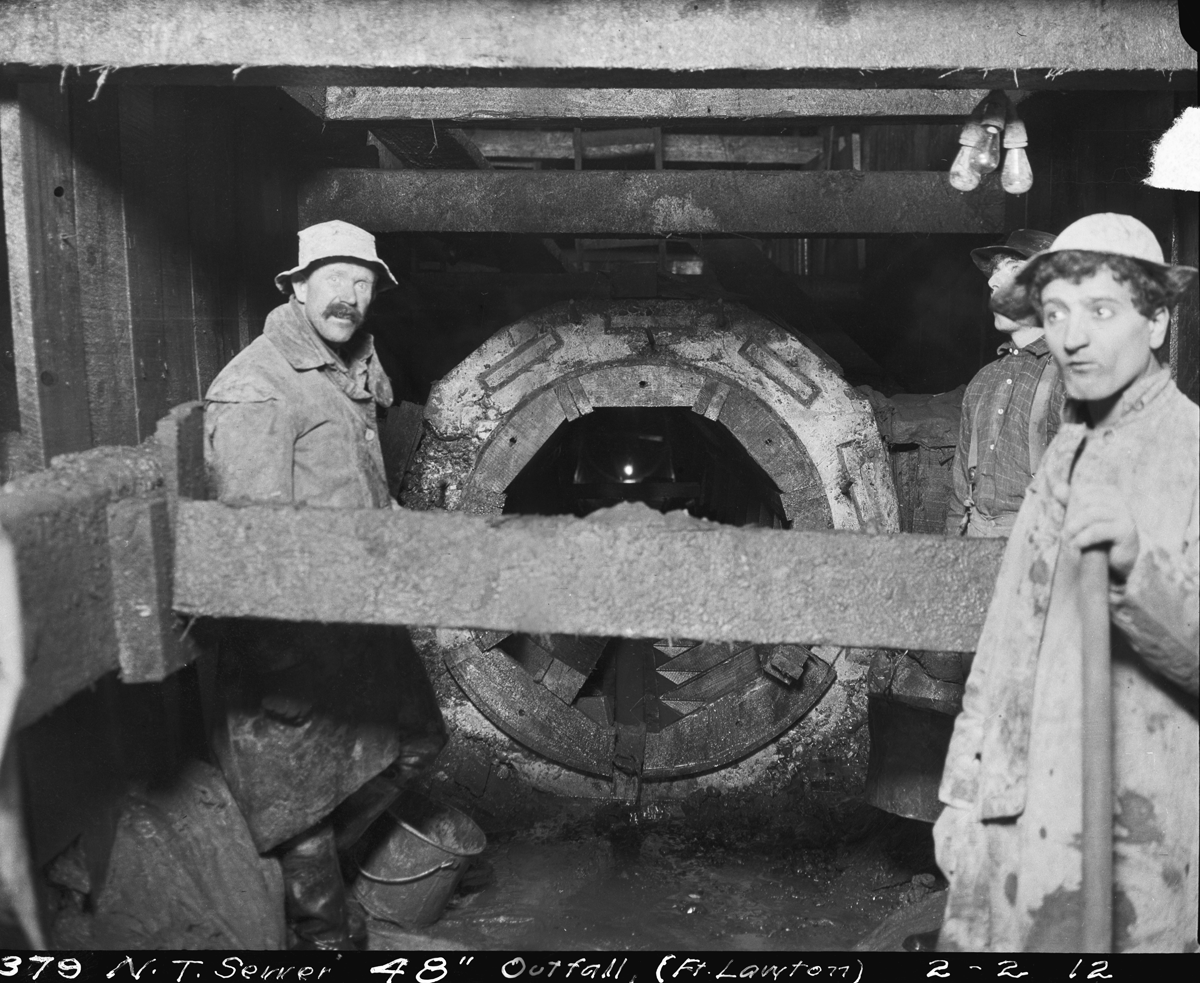An Early History of Plumbing
In the field of water leak detection, we have some of the best services available anywhere in the United States. That wasn’t always the case, however, and a look back at the history of plumbing in the City shows how far local residents have come since the founding fathers’ arrival.
In the Beginning, There Was the Mud
The underground ruins of old still exist, and while they’re a tourist attraction these days, they have mainly the mundane issue of plumbing to thank for their origins. Residents used outhouses or privies for their toilet needs, and water was hauled in from nearby Elliott Bay for flushing, washing and cooking purposes.
Arrival of the Crapper
Late in the 1800s, a gent by the name of Thomas Crapper brought an invention, which replaced the outhouse in the homes of the wealthy. This device—named the “Crapper” after its founder—needed to be connected to a central sewage system. Early plumbers developed a single wooden box pipe to draw the waste from the Crapper to the bay. The point at which it entered the water at the tip of the bay was known as West Point, and eventually became the location for the first waste-water treatment plant.
Flooded Homes and Exploding Toilets, Oh My!
Life that close to the water had its drawbacks, however, and one was that twice a day when the tide came in, a number of homes throughout the residential area were at risk of flooding. When that happened, the sewage in the drains from the privies would flow back into the homes and explode out of the toilets, drenching anyone within range. The Department of Engineering’s 1892 Annual Report speaks of “night soil” (sewage) from the business district being collected by horse-drawn wagons and taken to Elliott Bay waterfront, where it was towed several miles out and dumped.
Making Progress
Local residents began making plumbing progress around 1870 when the first indoor bathtub was installed, according to Myra Phelps’ Public Works: A Narrative History, The Engineering Department, 1875-1975. Only the wealthy could afford private indoor plumbing, but personal hygiene was becoming more widespread and by 1880 most local homes had wash basins in the bedrooms.
Rising from the Ashes
After the fire that almost destroyed in 1889, city fathers rebuilt in the same place – on the mud flats. Within a few years, property owners built 8-foot walls on either side of the sidewalks and filled them in to raise the street level up to the second storey of the buildings – mostly because of the water problems. This created the underground tunnels, and gave the City its first economic boom that resulted in the establishment of plumbing companies to serve the growing market.
Building a Water System
Another result of the fire was the recognition of a need for a publicly-owned water system. When the 1897 Klondike gold rush brought an influx of wealth into the City, public officials built a supply system using gravity to bring clean water from a high-altitude source in a protected wilderness into the City. This meant less contamination and minimal need for water treatment chemicals, which still benefits the area today.
Modern Times
In 1889 the Ernst Hardware & Plumbing Company opened its doors in the area. The company was one of the first to set up and grew in leaps and bounds. By the early 1900s, plumbing was a vibrant industry. In 1905, a ordinance codified the rules for plumbing features, and the City began to require permits and inspections for plumbing installations. Homes were mandated to be fitted with at least one lavatory and one sink. The first wave of bungalow construction that followed included installing six features in most homes:
- Toilet
- Bathroom basin
- Kitchen sink
- Bathtub
- Hot water tank
- Laundry trays
Fully-Plumbed Homes
By the 1940s, 97% of residents had flush toilets and less than 1% still used privies. Homebuyers expected – and got – a fully-plumbed house. The toilets had wooden seats and copper-lined, wooden water tank. Upper-class homes also had either an additional half-bathroom consisting of a toilet and basin, or a full second bathroom to “promote domestic harmony and marital bliss.”
During this time, the plumbing business was controlled by an association with a board consisting of three plumbing contractors, three union officials and a seventh man elected by the six. Plumbers were required to join the association and members agreed to hire only union labor.
In the latter half of the 20th century, plumbing came into its own with the establishment of a solid public works department, regulations governing sewers, drainage and water installation.
Photo Credits: King County, Municipal Archives

